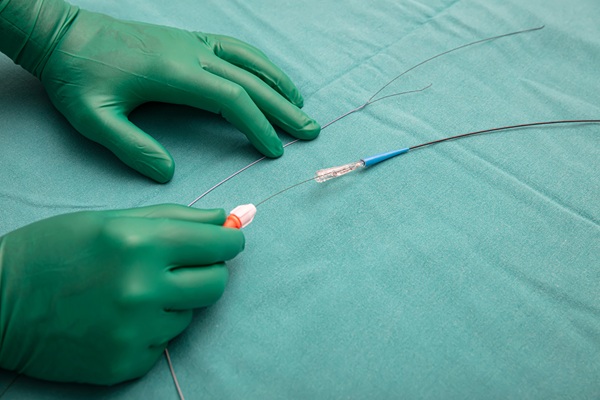How Long Does It Take to Recover From a Coronary Stent Procedure?

A coronary stent procedure is often performed to open up the coronary arteries that lead to the heart. It is a relatively minimally invasive procedure and serious side effects are rare. However, there is a recovery period of time the patient must closely follow to ensure a full recovery and reduce the risk of complications.
What to expect during recovery from a coronary stent procedure
The coronary stent procedure process is different for every patient. However, there are some expectations patients can have in anticipation of their scheduled coronary stent procedure. Understanding what to expect during and after the procedure can help you properly ahead of time.
The purpose of a coronary stent procedure
A coronary stent procedure is typically performed after a heart attack or if a cardiologist suspects a heart attack is likely in the near future without intervention. The purpose of a coronary stent procedure is to widen the coronary arteries and remove plaque that could cause a blockage and subsequent heart attack.
The risks involved with a coronary stent procedure
A coronary stent procedure is a relatively minimally invasive procedure. However, as is the case with all minor surgical procedures, there are certain risks to be aware of. Specifically, the risks of a coronary stent procedure include:
- Damage to the artery
- Stent-related blood clots
- Bleeding in the leg or arm
It is worth noting that most patients have a good experience and do not deal with any severe side effects such as those mentioned above.
What to expect after a coronary stent procedure
The most important thing to do after a coronary stent procedure is rest. The surgeon or cardiologist may provide additional aftercare instructions as well, and follow-up visits are most likely required to ensure there are no complications or additional risks.
The long-term results from a coronary stent procedure
A coronary stent procedure does not cure a blocked artery, but results have shown that they can significantly increase overall heart health and reduce the risk of a future heart attack. Of course, there are many other factors of heart health that are important, such as one’s diet, lifestyle routine, and exercise schedule.
The coronary stent procedure recovery time
The coronary stent procedure recovery time depends on a range of factors. Most notably, the recovery time depends on whether or not the procedure was a non-emergency or an emergency. For a non-emergency coronary stent procedure, the recovery time is typically around a week. However, an emergency procedure may require a recovery time of several weeks to more than a month. Ultimately, the cardiologist should tell the patient what to expect beforehand.
Get scheduled for a coronary stent procedure
If you have angina (chest pain), have recently experienced a heart attack, or a coronary stent procedure was recommended by a medical professional, give our team a call today. We can help every step of the way, whether it be answering initial questions or providing post-surgery recommendations.
Request an appointment here: https://boyntonbeach.floridapremiercardio.com or call Florida Premier Cardiology at (561) 229-1411 for an appointment in our Boynton Beach office.
Check out what others are saying about our services on Yelp: Coronary Stent in Boynton Beach, FL.
Recent Posts
A heart specialist is a doctor specializing in diagnosing and treating cardiovascular conditions. Patients may be referred to one of these doctors for several reasons, from diagnosing a heart health issue to getting cleared for surgery. However, seeing a heart specialist is even more crucial for those either experiencing the signs of heart disease or…
Cardiologists perform angioplasty to open blocked arteries, specifically those caused by coronary disease. This minimally invasive alternative to open heart surgery can restore proper blood flow to the heart and often reverse the fast track to a heart attack. However, learning when one is necessary is crucial for treatment success.Coronary artery disease (CAD) is a…
The heart's valves must remain healthy and upright to promote an overall healthy heart and cardiovascular system. However, sometimes, they can weaken. Fortunately, various valvular disease treatments are available to address damage. Whether valves begin to narrow or leak, timely treatment is necessary.There are two main types of heart valve disease: regurgitation and stenosis. The…
Cardiovascular care is crucial in maintaining a healthy heart and preventing long-term complications such as heart disease, stroke, and hypertension. As the cornerstone of overall well-being, cardiovascular care involves regular monitoring, lifestyle changes, and medical interventions designed to support heart function. Understanding the basics of cardiovascular care can empower individuals to make informed decisions and…


